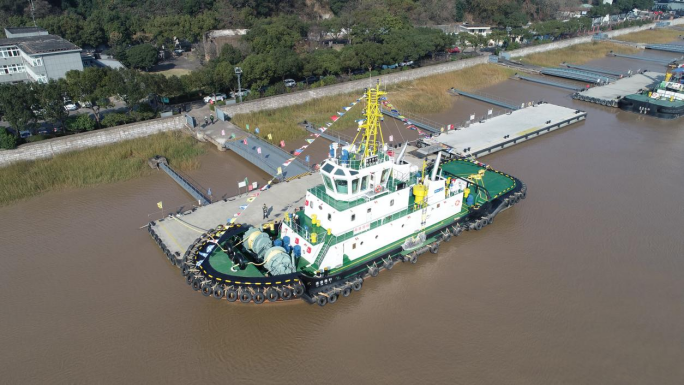Ningbo Zhoushan Port intelligent shore power system was put into use
Recently, the country's first oil-electric hybrid tugboat, Ningbo Oil Port Barge Co., Ltd. "Yonggang Tug 80" began to operate by charging 1,600 kWh through the intelligent shore power system of the wharf ship, marking the first intelligent shore power system of the working ship of Ningbo Zhoushan Port was put into operation.

Photo by Pan Zhijie
"With this system, our tugboats can use electric kinetic energy and make the port greener. Zhao Zhongyi, captain of the "Yonggang Tuo 80" ship, praised the intelligent shore power system of the newly put into use of the working ship. The system was invested and constructed by Ningbo Oil Port Barge Co., Ltd., located in Zhenhai District, including a 2,100 kVA box substation, an integrated low-voltage charging pile, high-voltage cables and supporting equipment, and was completed in October 2023.
According to reports, the intelligent level of the high and low voltage switchgear selected by the system is leading in the industry, which can not only monitor the electricity consumption in real time, but also automatically detect faults through remote monitoring, and synchronously feed back to the cloud network. It only takes about 2 hours to operate at full power, and the system can achieve the goal of full charge for the battery pack of the oil-electric hybrid tug "Yonggang Tug 80", which can efficiently ensure the operation needs of the ship.
"The cost of electricity is not more than 1 yuan per kilowatt hour, which can save a lot of costs compared with fuel. Zhu Youjun, the chief engineer of the "Yonggang Tuo 80" ship, calculated a green environmental protection account after the first operation of the "Yonggang Tuo 80" ship.
The relevant person in charge of Ningbo Oil Port Barge Co., Ltd. said that the synchronous operation of the intelligent shore power system of the workship and the hybrid tugboat is a key breakthrough in the port tugboat operation to achieve pollution reduction and low carbon. According to estimates, the annual electricity consumption of the "Yonggang Tuo 80" is expected to exceed 640,000 kWh, which can reduce diesel consumption by 200 tons per year, reduce carbon emissions by about 600 tons, and reduce emissions of nitrogen oxides and volatile organic compounds will also be significantly reduced.







